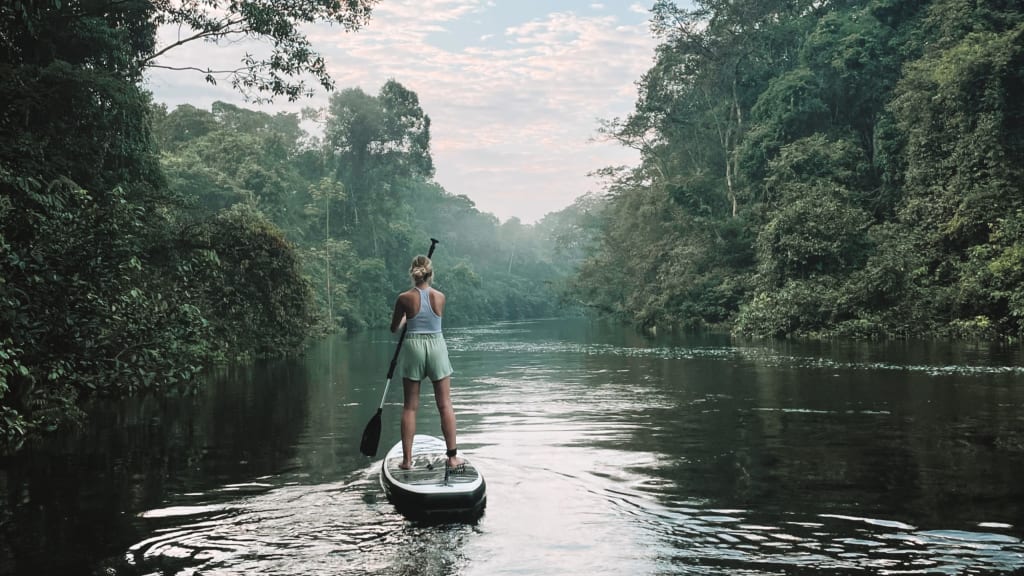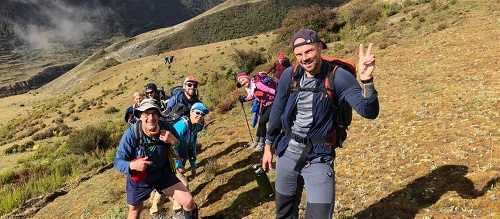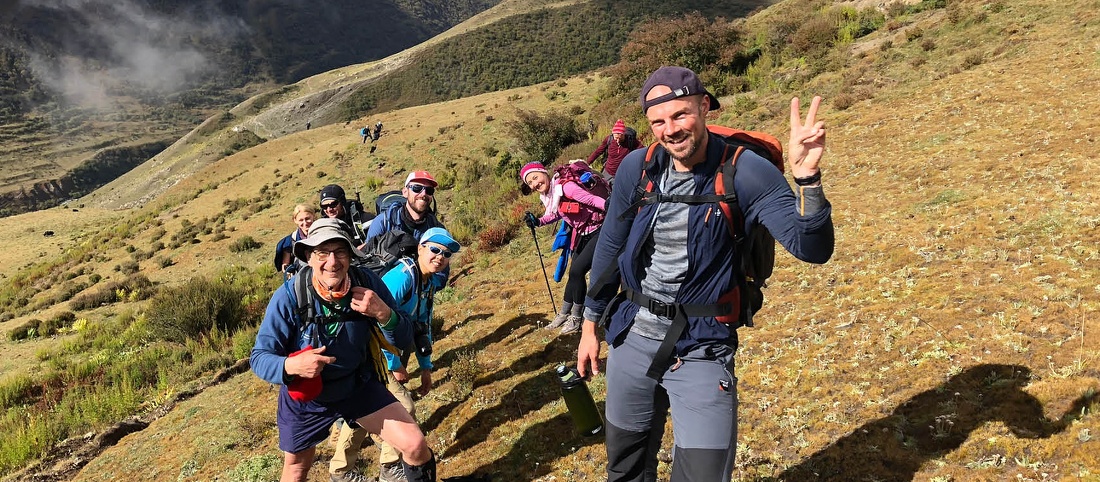Adventure tourism examples include activities such as rafting, climbing, hiking, kayaking, ziplining, and mountain biking. These activities are characterized by physical activity, exploration of the natural environment, and often cultural immersion.
Adventure tourism offers travelers the opportunity to challenge themselves and seek excitement in unique and often remote destinations. Adventure tourism is a rapidly growing segment in the travel industry, offering travelers the opportunity to engage in thrilling and physically demanding activities while exploring some of the world’s most breathtaking landscapes.
From towering mountain peaks to rushing rivers and dense forests, adventure tourism provides an adrenaline-pumping experience for adventurous souls. Whether it’s conquering the rapids of a wild river, scaling a challenging rock face, or trekking through rugged terrain, adventure tourism offers a diverse range of activities for thrill-seekers. Travelers can immerse themselves in nature while pushing their physical and mental limits, creating unforgettable and transformative experiences.
Adventure Tourism Examples
Adventure tourism is a form of tourism that involves exploration of remote locations, unique and thrilling experiences, and an adventurous spirit. It includes a wide range of activities that are capable of providing travelers with unforgettable and adrenaline-pumping experiences. From trekking in dense forests to skydiving over mesmerizing landscapes, adventure tourism offers an enriching and exhilarating escape from the ordinary. Below, we’ll explore the various facets of adventure tourism, from types and destinations to its presence in India and notable adventure travel companies.
Types Of Adventure Tourism
Adventure tourism encompasses various types of thrilling activities, some of which include:
- Ecotourism
- Bungee jumping
- Paragliding
- Hiking
- Parachuting
- Rafting
Adventure Tourism Destinations
Adventure tourism destinations across the globe include:
- Historic Sanctuary of Machu Picchu
- Great Barrier Reef
- Yosemite National Park
- Blue Mountains
- Alps
- Victoria Falls
Adventure Tourism In India
India is home to various adventure tourism hotspots, including:
- Rafting
- Goa
- Rishikesh
- Ladakh
- Kerala
- Himachal Pradesh
Adventure Travel Companies
Notable adventure travel companies include:
- G Adventures
- Intrepid Travel
- Contiki Tours
- Backroads
- Tauck
- Abercrombie & Kent USA

Credit: expertvagabond.com
What Is Adventure Tourism?
Adventure tourism is a tourism trip that includes at least two of the following three elements – physical activity, natural environment, and cultural immersion. It often involves risk and some skill from the tourist. Adventure tourism is a very large tourism segment, and it consists of many niche markets.
The European market potential for adventure tourism found at cbi.Eu
Definition Of Adventure Tourism
Adventure tourism is a type of tourism in which tourists engage in adventure activities such as trekking, climbing, rafting, scuba diving, or the likes. Adventure tourism gains much of its excitement by allowing the tourist to step outside their comfort zone.
Characteristics Of Adventure Tourism
- Physical activity
- Natural environment immersion
- Cultural immersion
- Risk and skill involvement
- Niche markets
Examples of hard adventure activities are paragliding, skydiving, mountaineering, via-ferrata, downhill skiing, scuba diving, and white-water kayaking. For instance, adventure travel may include activities such as mountaineering, trekking, bungee jumping, mountain biking, cycling, canoeing, scuba diving, rafting, kayaking, zip-lining, paragliding, hiking, exploring, Geocaching, canyoneering, sandboarding, caving, and rock climbing.
Examples Of Adventure Tourism
Adventure tourism is a booming industry that attracts thrill-seeking travelers from all over the world. This type of tourism offers a wide range of activities that incorporate physical activity, exploration of natural environments, and cultural immersion. Both hard and soft adventure activities capture the attention of adventure seekers, each offering unique experiences and challenges.
Hard Adventure Activities
Hard adventure activities are those that require a high level of physical exertion, skill, and often involve an element of risk. These activities push adventurers to their limits, providing an adrenaline rush like no other. Some examples of hard adventure activities include:
- Paragliding
- Skydiving
- Mountaineering
- Via-ferrata
- Downhill skiing
- Scuba diving
- White-water kayaking
Engaging in these activities requires courage, determination, and a sense of adventure. From soaring through the sky to conquering rugged terrains, hard adventure activities offer unforgettable experiences for those seeking a thrill.
Soft Adventure Activities
Soft adventure activities, on the other hand, provide a more accessible and less physically demanding experience while still incorporating elements of adventure. These activities are suitable for a wide range of individuals and often emphasize exploration and connection with nature. Some examples of soft adventure activities include:
- Hiking
- Cycling
- Canoeing
- Rafting
- Kayaking
- Zip-lining
- Paragliding
Soft adventure activities allow adventurers to immerse themselves in stunning landscapes, enjoy nature’s beauty, and challenge themselves in a more moderate way. Whether it’s trekking through lush forests or navigating through rushing rivers, soft adventure activities offer a wonderful blend of excitement and tranquility.
Adventure tourism opens up a world of thrilling opportunities for those seeking to break free from their everyday routines. Whether you’re into heart-pounding experiences or prefer a gentler adventure, there’s something for everyone in the realm of adventure tourism.

Credit: www.worldpackers.com
Popular Adventure Activities
Experience the thrill of rafting, climbing, hiking, kayaking, ziplining, mountain biking, trekking, backpacking, and bungee jumping as examples of adventure tourism activities. These activities offer a combination of physical activity, connection with nature, and cultural immersion, making them popular choices for adventurous travelers.
Mountaineering
One of the most exhilarating adventure activities is mountaineering. Scaling the majestic peaks of mountains provides a unique sense of accomplishment and awe-inspiring views. Whether it’s conquering the towering heights of the Himalayas or exploring the rugged terrains of the Andes, mountaineering attracts adventurers seeking the ultimate challenge.Trekking
For those who enjoy a combination of physical activity and natural exploration, trekking is the perfect adventure activity. Trekking allows you to immerse yourself in stunning landscapes while trekking through dense forests, crossing rivers, and navigating rugged terrains. From the iconic trails of the Appalachian Mountains to the breathtaking routes of the Inca Trail, trekking offers a memorable and rewarding experience.Rafting
Rafting is an adrenaline-pumping adventure activity that takes you on a thrilling ride through fast-flowing rivers. With the rush of the rapids and the breathtaking scenery along the way, rafting combines excitement and natural beauty. From the exhilarating whitewater rapids of the Colorado River to the picturesque valleys of the Zambezi River, rafting offers an unforgettable adventure for thrill-seekers.Scuba Diving
Explore the vibrant underwater world and dive into the depths of the ocean with scuba diving. This adventure activity allows you to discover mesmerizing coral reefs, encounter diverse marine life, and witness underwater wonders. From the pristine waters of the Great Barrier Reef to the crystal clear lagoons of the Maldives, scuba diving offers a unique and awe-inspiring experience.Bungee Jumping
For those seeking the ultimate adrenaline rush, bungee jumping is the go-to adventure activity. Leap off towering platforms and experience the exhilaration of free-falling before being pulled back up by a bungee cord. From the iconic sites of New Zealand’s Queenstown to the stunning views of South Africa’s Bloukrans Bridge, bungee jumping offers an extraordinary adventure for the brave-hearted. In conclusion, adventure tourism offers a plethora of thrilling activities for adrenaline junkies. Whether it’s mountaineering, trekking, rafting, scuba diving, or bungee jumping, each activity provides a unique blend of physical challenges, natural wonders, and unforgettable experiences. So, gear up and embark on your next adventure-filled journey.Benefits And Risks Of Adventure Tourism
Adventure tourism offers a thrilling experience with activities like rafting, climbing, hiking, and zip-lining. While it provides a chance to step out of one’s comfort zone and enjoy nature, it also involves risks and requires some skill and physical activity, making it an exhilarating but potentially hazardous choice for travelers.
Benefits Of Adventure Tourism
Adventure tourism offers a multitude of benefits for those seeking a thrilling and exhilarating experience. Whether it’s exploring new terrains or engaging in adrenaline-pumping activities, adventure tourism provides a unique opportunity for individuals to challenge themselves physically and mentally.- Physical and Mental Health: Engaging in adventure activities helps improve physical fitness and stamina. Activities such as hiking, rafting, and mountain biking require endurance and strength, which contribute to overall fitness levels. Additionally, adventure tourism provides a break from the monotonous routine and allows individuals to rejuvenate their minds, reducing stress and promoting mental well-being.
- Personal Growth: Adventure tourism pushes individuals outside their comfort zones and encourages personal growth. Overcoming fears and taking on new challenges builds confidence, enhances problem-solving skills, and fosters a sense of accomplishment. Exploring unfamiliar territories also promotes cultural immersion and broadens perspectives.
- Nature Appreciation: Adventure tourism often takes place in natural environments, allowing participants to connect with nature and gain a deeper appreciation for the environment. When engaging in activities like hiking or kayaking, individuals have the opportunity to witness breathtaking landscapes, stunning flora and fauna, and experience the serenity of untouched wilderness.
Risks And Safety Measures
While adventure tourism offers thrilling experiences, it is important to acknowledge and address the risks involved. Proper safety measures should be implemented to ensure the well-being of participants. Below are some key risks associated with adventure tourism and the corresponding safety measures:| Risks | Safety Measures |
|---|---|
| Physical Injuries | Participants should undergo thorough safety briefings and receive appropriate training before engaging in adventure activities. Wearing protective gear and following safety guidelines provided by certified guides or instructors is crucial. |
| Environmental Hazards | Participants should be aware of potential environmental hazards such as extreme weather conditions, rough terrains, or wildlife encounters. Proper planning, including checking weather forecasts and having a knowledgeable guide, can mitigate these risks. |
| Emergency Situations | Having a well-equipped first aid kit and knowledgeable staff is essential to handle any emergency situations. Participants should also be aware of emergency protocols and have a clear communication plan. |
| Unforeseen Circumstances | Having contingency plans in place for unforeseen circumstances such as equipment failure or sudden changes in weather conditions is vital. Regular safety assessments and proper maintenance of equipment are imperative. |

Credit: worldexpeditions.com
Frequently Asked Questions For Adventure Tourism Examples
What Is Adventure Tourism?
Adventure tourism is a type of tourism involving physical activity, natural environment, and cultural immersion. It often includes adventure activities such as trekking, climbing, rafting, and scuba diving, and tends to require some level of skill and risk.
Which Example Is A Type Of Adventure Tourism?
Climbing is a classic example of adventure tourism. It combines physical activity and allows you to appreciate the beauty of nature.
What Are Examples Of Hard Adventure Tourism?
Examples of hard adventure tourism include activities such as paragliding, skydiving, mountaineering, via-ferrata, downhill skiing, scuba diving, and white-water kayaking.
What Is One Example Of Adventure Travel?
Climbing is an example of adventure travel, combining physical activity and the beauty of nature.
Conclusion
Adventure tourism offers a unique and thrilling experience for travel enthusiasts. From trekking through the majestic Alps to white-water kayaking in the Great Barrier Reef, adventure tourism offers a wide range of exhilarating activities. Whether you’re seeking adrenaline-pumping adventures or simply want to step outside your comfort zone, adventure tourism has something for everyone.
So, embark on a journey filled with excitement, breathtaking landscapes, and cultural immersion. Discover the thrill of adventure tourism and create unforgettable memories on your next trip.


Leave A Comment